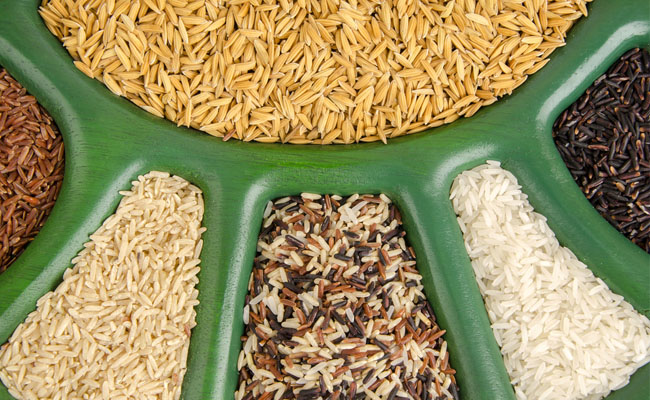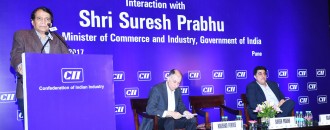
Time to tweak India’s rice export policy
Bidhu Bhushan Palo | @TheDollarBiz  There is good news for Indian rice exporters. According to industry estimates, India’s rice production is likely to reach (or at least remain) at record high levels of around 105 million tonnes again in 2014-15. This improves chances that India will retain its position as the world’s largest rice exporter, ahead of Thailand and Vietnam, for the third year in a row. Thailand lost its top rice exporter status for the first time in over two decades in 2011-12 to India. However, the reasons behind this are far from something that will make our exporters (or farmers) beam with pride. One reason was a glut in India due to a three-year ban on exports of non-basmati rice that was unnecessary in hindsight and lifted in late 2011. It was the same time when Thailand began its (much criticised) rice purchase program to artificially lift prices. Since then, political uncertainty in Thailand and record production in India has helped India remain the world’s largest rice exporter. But can India sustain the momentum? It’s a big no, and that’s the reason behind several problems that ails the rice sector in India, leading to low prices and farmer suicides in several parts of the country despite a steady increase in government’s support price.
There is good news for Indian rice exporters. According to industry estimates, India’s rice production is likely to reach (or at least remain) at record high levels of around 105 million tonnes again in 2014-15. This improves chances that India will retain its position as the world’s largest rice exporter, ahead of Thailand and Vietnam, for the third year in a row. Thailand lost its top rice exporter status for the first time in over two decades in 2011-12 to India. However, the reasons behind this are far from something that will make our exporters (or farmers) beam with pride. One reason was a glut in India due to a three-year ban on exports of non-basmati rice that was unnecessary in hindsight and lifted in late 2011. It was the same time when Thailand began its (much criticised) rice purchase program to artificially lift prices. Since then, political uncertainty in Thailand and record production in India has helped India remain the world’s largest rice exporter. But can India sustain the momentum? It’s a big no, and that’s the reason behind several problems that ails the rice sector in India, leading to low prices and farmer suicides in several parts of the country despite a steady increase in government’s support price.
 Source - Department of Food & Public Distribution, India
Source - Department of Food & Public Distribution, IndiaUnder such circumstances, it is probable that a small tweak in policy could do a world of good for India’s rice sector. But first let’s take a look at the problems. Is Surplus = Export? A new generation rice miller and exporter recently showed to me rice samples of Indian and Thai rice (widely known for its quality all around the world). It was difficult to see any difference. Despite the lack of any initiatives to develop the “Made in India” brand, Indian rice is gaining popularity in several parts of the world. But India’s rice policy remains the same: export when there is a surplus, stop when there isn’t. That’s the root cause of the problem, as it is with exports of most other commodities. A representative of rice millers association in Northern India is correct when he tells me that it is important to export rice instead of allowing it to rot in warehouses. However, what we fail to realise is the importance of value-addition and policy changes. Uncertainty Over 60% of India’s rice area is unirrigated, but the government’s rice export policy is perhaps a bigger threat. It is widely believed that the ban on rice exports during the food crisis in 2008 was mostly panic-driven (Read The Rice Crisis: FAO and Earthscan, 2010). Such knee-jerk reactions dent the confidence of exporters who are in a vantage point to lead the entire chain – from providing funds to securing markets, boosting productivity, improving infrastructure and establishing Brand India. In the same FAO report (slightly old, but with sharp insights), Ashok Gulati and Monica Dutta, both working with the International Food Policy Research Institute (IFPRI) then, reveal the poverty-stricken rice policy in India. The authors of the report say: “The government policies in India have restricted domestic prices below international prices for most years. In addition, exports are also restricted to ensure the food security of the nation. The export of common (non-basmati) rice from India was banned until 1994, despite having an inherent comparative advantage in the same.” They add, “In India different policies were followed for common rice and basmati rice. There was no restriction on the export of basmati rice. However, until 1991, the export of common rice was subject to canalization, minimum export price and export quotas. There were also restrictions on stocking rice beyond a limit unless an export order was in hand (Datta, 1996). Even imports of common rice have been subject to quantitative restrictions occasionally when production dropped significantly.” It was in 1995-96, that the government allowed exports of non-basmati rice, and overall rice exports surged almost five times to 4.9 million tonnes in the year, up from less than one million tonnes recorded in 1994–1995. However, restrictions were back in October 2007, and a complete ban on non-basmati rice exports was placed in March 2008. The FAO report says that India should aim at improving competitiveness and that trade liberalisation is the answer.
 Source - Ministry of Commerce, India
Source - Ministry of Commerce, IndiaTime to think out of the box So is trade liberalisation the only way out? May not be. First, there is a raging debate going on over whether food security comes first or trade. And second, trade liberalisation is unlikely to help improve realisation. There is another way out, but did you note that all along the Indian government allowed basmati rice exports, even during the food crisis. Take a leaf from basmati The contrast between basmati and non-basmati rice is stark. Basmati is considered a cash crop and a luxury brand, while non-basmati is a staple that is subject to abrupt export bans. Basmati rice is perhaps the most expensive rice in the world, while India’s non-basmati rice is perhaps the cheapest. While non-basmati rice farmers (and also exporters) in India often resort to distress selling due to lack of buyers and storage space, basmati rice exporters buy and store rice for years (aging) with some exporters having the capacity to store up to two million tonnes of basmati rice. That’s around 20% of India’s total annual rice exports! While non-basmati rice farmers do not have access to funds for upgradation, farm mechanization, and quality seeds, basmati rice farmers get advances for their crop. Isn’t the anomaly large? What does this mean? For an exporter, it means don’t invest in production of non-basmati rice because exports may be banned anytime. For a farmer, it means the same thing and so the vicious cycle goes on. This is harmful for a sizeable part of our country, because basmati can only be grown (as per the GI requirement) in the Indo-Gangetic plains. So, if you grow basmati in Kerala (which has actually happened), you still cannot sell it as basmati.
The way forward It’s high time the government did something about the non-basmati sector or risk losing rice farmers in several parts of India to menial jobs in cities. The answer lies in, not expanding the basmati rice sector, but in tweaking it to help cover all parts of India. Like in several countries, India has to put in place a fixed policy for “specialty” rice and not just basmati rice. There is a growing demand for diabetic-friendly and other medicinal rice, coloured rice, fortified rice (with zinc, iron, etc), aromatic (but not basmati) rice, and organic rice. All these varieties (along with parboiled rice?) ought to be considered as cash crops, and put in the basket with basmati. The best thing about this is that all these varieties can be grown anywhere in India, including in basmati growing regions. We cannot improve the non-basmati sector without assuring farmers and exporters a market other than the Food Corporation of India (FCI). Neither can the government be urged to allow uninterrupted exports of non-basmati rice because the Bad Boy (El Nino) may pull the country into starvation and hunger in a matter of months. However, what can be done is tweak the policy. It’s long due and now is perhaps the best time, while India is still at the top and visible in the international markets.
(This blog was published on September 23, 2014)







 to success.
to success.